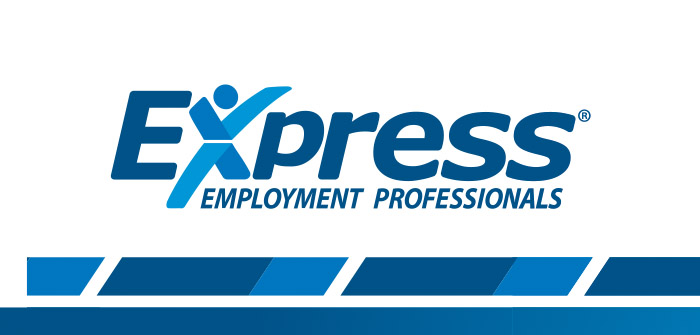Source: Employment Trends, Express Employment Professionals, Aug 2021
Remote work continues to play a key role in the tight labor market as 63% of U.S. companies will allow existing employees to work remotely once the COVID-19 pandemic subsides and 60% agree that a rise in this trend is making it more difficult to attract and retain employees.
This is according to a new survey from The Harris Poll commissioned by Express Employment Professionals.
The majority of U.S. hiring decision-makers (70%) agree onboarding employees remotely requires more time and money than doing it in an office. Despite the extra resources required to hire remotely, more than half (55%) say their company hired and onboarded new employees remotely during the COVID-19 pandemic, and a similar proportion (51%) report their company plans to do so once the COVID-19 pandemic subsides.
This shift may be in response to employee desires and recruitment challenges, as a survey by Owl Labs found that 59% of employees would be more likely to choose one employer over another if offered remote work.
Of those, hiring decision-makers are split as to whether they will use specific criteria to determine which employees can work remotely (51%) or if all existing employees will be allowed to work remotely (49%). For those who will choose which employees can work remotely, the most commonly cited decision criteria include job responsibilities that can only be completed in a physical workplace (67%), successful completion of goals as measured through key performance indicators (47%) and job title/level such as only employees above a certain level can work remotely (44%).
Around 1 in 3 say factors such as geographic location (i.e., if employees are near a physical workplace they must go) (36%) and/or length of time employed (i.e., only employees who have been at the company for a certain amount of time can work remotely) (32%) will play a role in the decision.
Stacey Snodgrass and Reggie Kaji, Express franchise owners in Washington and Michigan, respectively, only have a handful of clients who allow employees to work remotely but agree some variation of flexibility is likely to continue.
“I think some companies will offer remote positions from here on out,” Snodgrass said. “I know businesses that have transitioned their core team to permanent work-from-home scenarios and will not be coming back to the office.”
As for whether in-person or remote positions are more beneficial to companies, Kaji says it’s mainly dependent on the type of work employees perform.
“Obviously, the full remote work setting saves on company overhead, but the question that remains is ‘Can remote work be just as effective as in-person workplaces?'” he said. “Personally, for my offices, we will stick with a hybrid model as it works for us.”
To determine if employees are able to work from home, Kaji says the No. 1 criteria revolves around worker efficacy.
“Does the job require you to be somewhere physically? Some jobs simply cannot be done remotely,” he said. “There is not a one-size-fits-all solution to this situation.”
Proper working environments and equipment are also requirements for Snodgrass.
“We had some people with old computers and bad internet,” she said. “We were not prepared to have laptops for everyone, as I am sure other companies were not either.”
With several companies across the nation offering either hybrid or fully remote positions, those that don’t are increasingly struggling to attract and retain top talent.
“I do think that has something to do with the issues of finding people,” Snodgrass added. “There are employees without daycare and not knowing if schools are back full time in the fall, I could see why a working parent would need to be home. People are still afraid, and as not everyone is vaccinated or wants to get vaccinated, it will continue to be an issue.”
Until the labor market begins to settle at some point and the COVID-19 pandemic retreats, companies may have to offer employee flexibility to entice candidates to join their workforce, Express CEO Bill Stoller said.
“Not every job allows employees to work from home, but we are seeing workers readily seek new opportunities that do offer this benefit,” he added. “It will be interesting in the next few years to see the permanent impact COVID-19 will have on the future of work, including where work is performed.”
Survey Methodology
The survey was conducted online within the United States by The Harris Poll on behalf of Express Employment Professionals between March 23 and April 12, 2021, among 1,001 U.S. hiring decision-makers (defined as adults ages 18+ in the U.S. who are employed full-time or self-employed, work at companies with more than one employee, and have full/significant involvement in hiring decisions at their company). Data was weighted where necessary by company size to bring them into line with their actual proportions in the population.
###
If you would like to arrange for an interview with Bill Stoller to discuss this topic, please contact Sheena (Karami) Hollander, Director of Corporate Communications and PR, at (405) 717-5966.
About Bill Stoller
William H. “Bill” Stoller is chairman and chief executive officer of Express Employment Professionals. Headquartered in Oklahoma City, Oklahoma, the international staffing company has more than 830 franchises in the U.S., Canada, South Africa, Australia and New Zealand. Since inception, Express has put more than 9 million people to work worldwide.
About Express Employment Professionals
At Express Employment Professionals, we’re in the business of people. From job seekers to client companies, Express helps people thrive and businesses grow. Our international network of franchises offers localized staffing solutions to the communities they serve across the U.S., Canada, South Africa, Australia and New Zealand, employing 526,000 people globally in 2020. For more information, visit www.ExpressPros.com.



